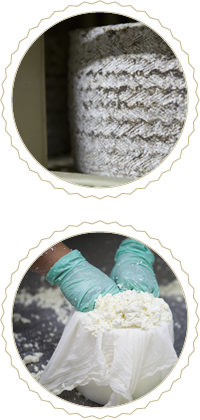To create an artisanal Manchego
“This is what Queso Manchego tasted like when I was a child.” Ramon Romero y Asensi, born 1929 Martos, Spain
La Oveja Negra (The Black Sheep), this Organic Queso Manchego is made in Central Spain using milk from a herd of black, Manchega sheep, the traditional type of sheep used in producing Queso Manchego, but which is now almost extinct. There are many unusual and interesting things about this fantastic cheese, but its entire story can be summed in one thought: This is a Queso Manchego that tastes like Queso Manchego used to long ago.

These days Queso Manchego has become a commodity cheese, meaning a cheese, like Swiss, Cheddar or Parmigiano, that people ask for by category, not producer. In other words, Manchego cheese itself has become a brand. People don’t really know or care who makes it and producers tend to be anonymous, factory-style operations making large quantities of product to be sold cheaply in supermarkets. This wasn’t always the case. Some 80 years ago Queso Manchego was made by small producers who took pride in what they did and was sold entirely in Spain, often by the wheel, to families who knew the producers they liked and stuck with those producers year after year. The old Manchego, the real Manchego wasn’t an industrial product, it was a local, artisanal food.
La Oveja Negra (The Black Sheep) Queso Manchego is a return to those earlier times. Unlike most Manchego cheeses these days it is made by hand, by two women in fact, who are artisans trained in the traditional methods for making this cheese. The dairy is located on the farm where the sheep are raised, and the two cheesemakers and their families live on premise, making this a true farmstead cheese in every sense of the word. But it isn’t just the way this cheese is made that makes La Oveja Negra such a traditional product, it’s the milk itself that harkens back to an earlier time. La Oveja Negra cheese is made from the milk of the distinctive black Manchega sheep that were once widely used to produce Queso Manchego, but which are now virtually extinct. This milk is richer, creamier and more complex than regular Manchego milk. That’s why people all over Spain, people who are old enough to remember what Manchego used to taste like are amazed when they try La Oveja Negra.
